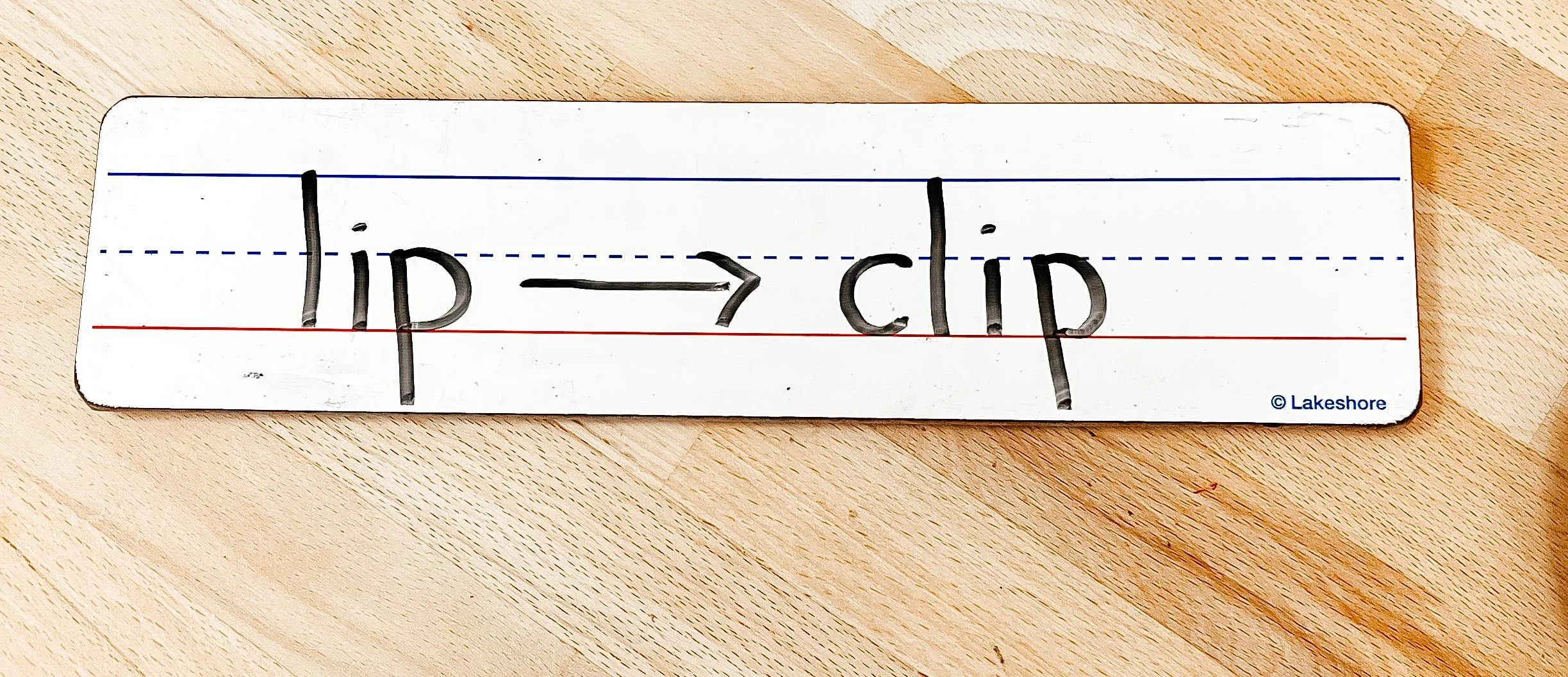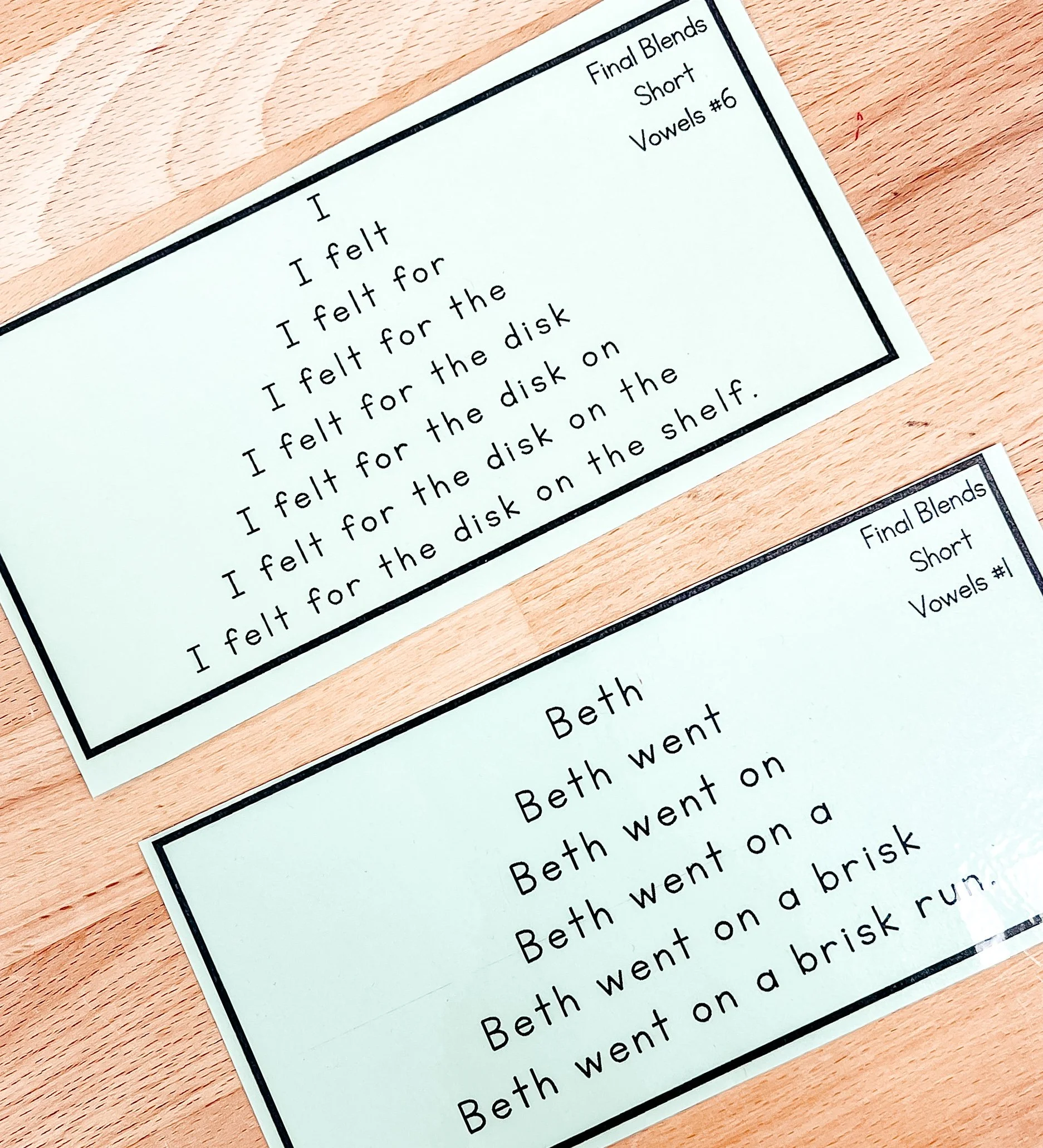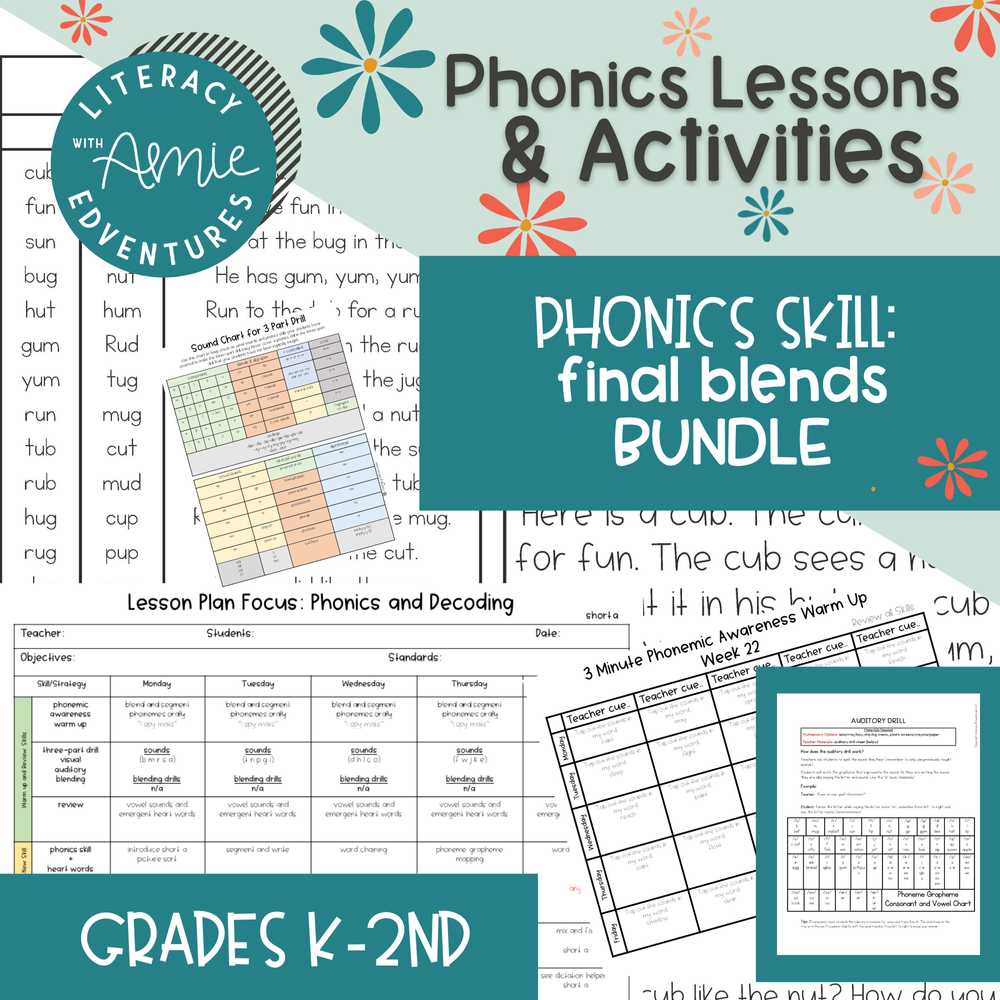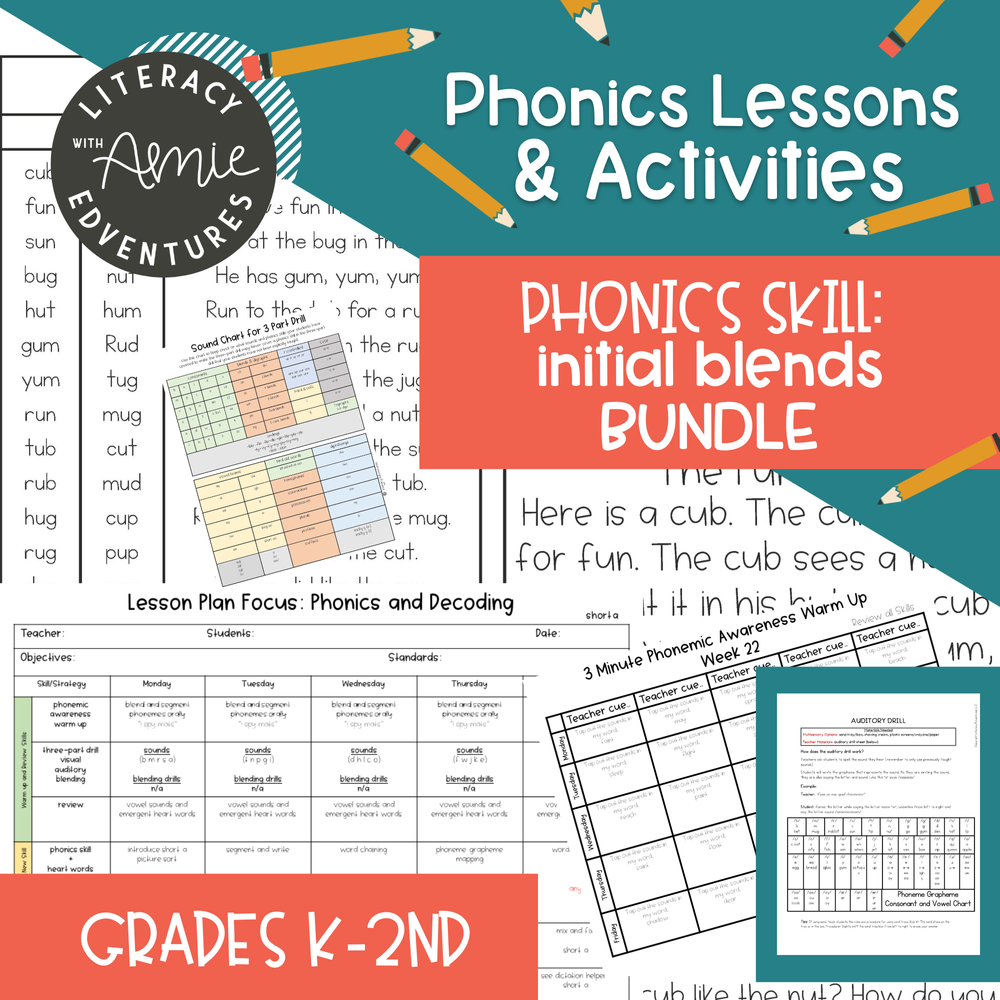Tips & Tricks for Mastering Blends
I don’t know about you, but teaching blends can be tricky. Blends, also known as consonant blends, are two or three consonant sounds that appear together in a word without any vowel sounds in between. These are words like flip, stop, strip, help, desk, and spring. When students begin learning blends, they struggle to hear both sounds at the beginning or at the end. They often leave out the second sound. This happens because they are so used to reading and writing CVC words and this shift makes it difficult. Today, I am going to share with you a few ways that you can make blends stick for your students.
1. Explicit Instruction:
Research consistently supports the use of explicit instruction when teaching phonics blends. Explicit instruction involves clearly explaining the blend's sound and demonstrating how it is formed by combining individual consonant sounds. Teachers should explicitly model blending sounds together and provide ample opportunities for guided practice. This approach helps students understand the concept and develop the necessary skills to decode blends independently. When I teach blends I like to use this saying: When we think about blends we need to remember that while we hear BOTH sounds, they roll off of our tongue at the same time.
2. Multisensory Activities:
Engaging students in multisensory activities can significantly enhance their understanding and retention of phonics blends. Research suggests that incorporating visual, auditory, and kinesthetic elements into instruction can benefit learners of all abilities. For example, using letter tiles or magnetic letters to physically manipulate and blend sounds, along with corresponding visual aids, can reinforce the connection between letters and sounds. My favorite activity is asking students to push chips into elkonin boxes only focusing on the beginning or ending blends and then adding the other sounds.
3. Moving from the “known” to the “unknown”
By starting with a CVC word that your student knows like lip and adding a letter to the beginning like clip, students are able to see the difference. By allowing students to work with what is known and add the unknown, we are reducing that cognitive load for them and helping them to apply new skills with the support of old ones. You can do this by simply having students write words OR use a strategy called word chaining which allows students to manipulate the sounds within words.
4. Incorporate phonemic awareness
My amazing friend Savannah Campbell from Campbell Creates Readers says “You cannot do in print what you cannot do orally.” Mmmmmm… so good right? Before jumping right into print, allow students time to practice orally blending and segmenting initial and final blends.
5. Application: Reading and Writing
Research suggests that integrating phonics instruction into meaningful reading and writing activities enhances students' application of phonics skills. This is why it is so important to follow up instruction time with reading and writing connected to the skill you are teaching. This will help your students transfer their phonics knowledge to real-world reading and writing tasks.
Conclusion:
Teaching phonics blends is a critical component of developing strong reading and spelling skills in students. By incorporating research-based techniques such as explicit instruction, multisensory activities, phonemic awareness, word chaining, phoneme-grapheme mapping, and reading and writing, we can effectively support students' mastery of these skills. Remember, a solid foundation in phonics blends equips students with the skills they need to become confident readers and writers.
If you are hoping for print-and-go resources to make planning blends a little easier, click the links below and grab my phonics bundles! Read the reviews on these bundles below!
“Thank you very much for this resource. It saved planning and preparing time. My students enjoyed it. It had some useful skills for learners, especially ESL learners to learn from-Hope to buy more products from you in the future! :) Good quick easy reference for my students.”
“All of the SoR content can be overwhelming when trying to implement it with existing curriculums, but this one fits in smoothly. I rarely spend this much money on a product, but I don’t think I’ll ever regret it!”
“This resource is awesome! Very easy to prep and implement right away in my classroom. This takes the guesswork out of things. Thank you!”






